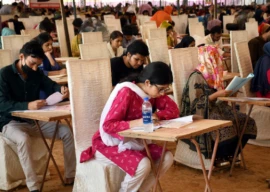
To commemorate Quaid-e-Azam Muhammad Ali Jinnah's birth anniversary, the Punjab Arts Council (PAC) organised a photo exhibition titled 'Quaid Kay Shab-o-Rooz'. The exhibition showcased over 150 rare photographs illustrating the life and legacy of the Father of the Nation.
The event aimed to educate the younger generation about Quaid-e-Azam's monumental struggle and sacrifices for the creation of Pakistan.
A documentary film highlighting his life and achievements was also screened as part of the celebration.
The event was inaugurated by Member of the National Assembly (MNA) Tahira Aurangzeb, who was accompanied by MNA Seema Jilani, Parliamentary Secretary for Information and Culture, Shazia Rizwan, Member of Provincial Assembly (MPA) Zaib-un-Nisa Awan, MPA Asma Abbasi, MPA Rifat Abbasi, and Director of the Arts Council Sajjad Hussain.
Addressing the audience, Tahira Aurangzeb said that Quaid-e-Azam Muhammad Ali Jinnah was a symbol of hope and determination, whose unwavering resolve led to the creation of Pakistan. She emphasised the importance of adopting Quaid-e-Azam's principles in daily life.
Jillani expressed her pride in being a citizen of a country that was achieved through the struggle of such a dedicated, selfless, and honest leader.
She added that not only experts and historians from the subcontinent but also international historians and analysts pay tribute to this great leader's wisdom, vision, and leadership.
Parliamentary Secretary information and Culture Department, Shazia Rizwan highlighted that Quaid-e-Azam fought for the Muslims on the basis of the Two-Nation Theory.
Under his leadership, Pakistan emerged as an independent state, for which the nation pays tribute to the Quaid-e-Azam.
She added that the nation is progressing in literature and culture in line with Quaid-e-Azam's vision and stressed the need to reaffirm the commitment to his teachings and unity.


1726117332-0/Megan-Thee-Stallion-(1)1726117332-0-165x106.webp)





















COMMENTS
Comments are moderated and generally will be posted if they are on-topic and not abusive.
For more information, please see our Comments FAQ